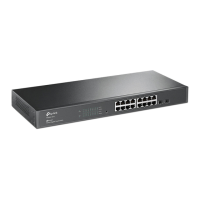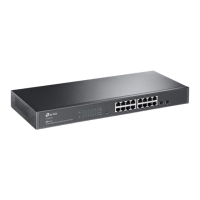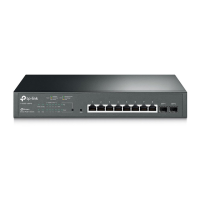51
5.1 Stack Management
Before configuring the stack, we highly recommend you to prepare the configuration planning with
a clear set of the role and function of each member device. Some configuration needs device
reboot to take effect, so you are kindly recommended to configure the stack at first, next connect
the devices physically after powering off them, then you can power them on and the devices will
join the stack automatically. After stack is established, users can log in the stack system through
any member devices to configure and manage it.
The stack management can be implemented on Stack Info and Stack Config pages.
5.1.1 Stack Info
On this page you can view the basic parameters of the stack function. Choose the menu Stack
Management→Stack Info to load the following page.
Figure 5-7 Stack Info
The following entries are displayed on this screen:
the current MAC address of the stack which usually is the
MAC address of the master switch. The stack uses it to
Stack Member Info
Unit ID: Displays the unit number of the member switch.
New Unit ID: Displays the configured unit number of the switch.
Role: Displays

